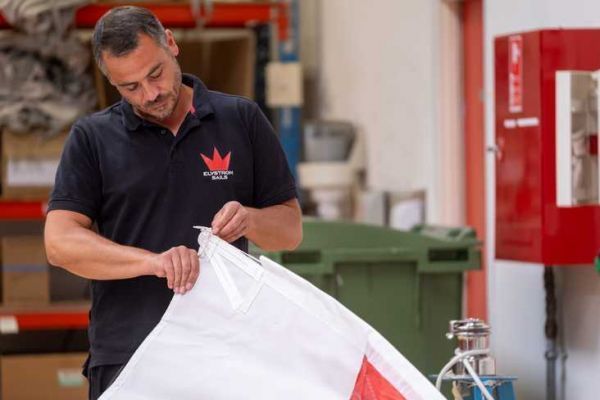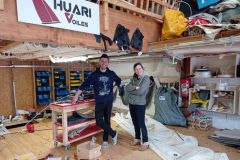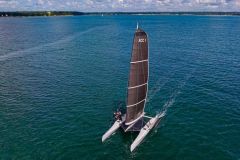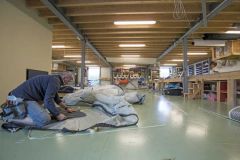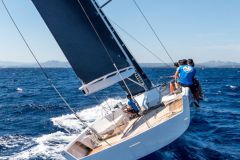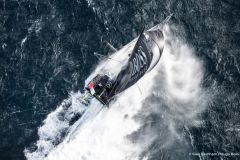On the starting line
Paul Elvstrøm was in the middle of his racing career when he decided to try his hand at sailmaking. After his victories at the Olympic Games in London in 1948 and Helsinki in 1952, he felt it was time for a change in his professional life.
Previously a successful construction entrepreneur, Paul Elvstrøm emptied the basement of his family home in Hellerup, just north of Copenhagen. With a clear vision and conclusive initial tests on dinghy sails, he quickly came up with a competitive product, brimming with ideas for faster, safer dinghy racing.
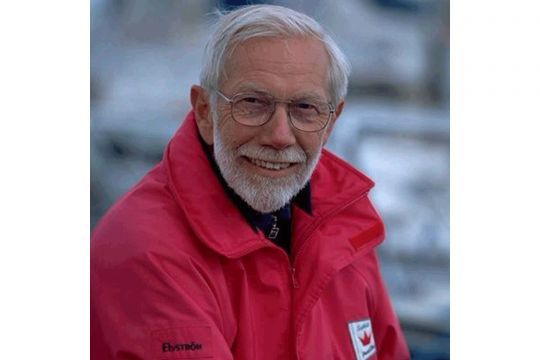
Sail adjustment
The basement loft first took shape around a single sewing machine. With the help of his close friend Erik "Strit" Johansen, Paul opened the doors to Elvstrøm Dinghy Sails in 1954. With their competitive potential, his sails were soon in great demand.
Drawing on his past and present experience in top-level dinghies, Paul Elvstrøm has also had good ideas outside the sailmaker's, and put them into production. Scooping a dinghy has always been a problem, and can prevent a regatta from being completed. Elvstrøm designed the self-bailing dinghy, bringing about a real silent revolution, with a product still manufactured under a different name. Unheard of in dinghy racing at the time, Paul Elvstrøm came up with a floating vest that didn't interfere with boat handling, and quickly became a success.
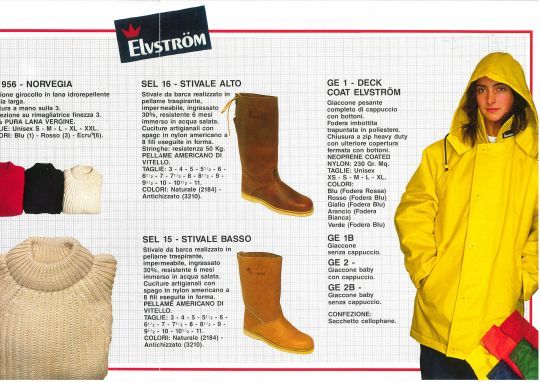
New industrial facilities
The 60s marked a shift up a gear for Elvstrøm Dinghy Sails. In 1963, the company moved to new premises in Rungsted Havn, employing 20 people, and five years later, the walls no longer being sufficient, moved into the first real factory. And so, in 1968, Paul Elvstrøm opened the doors of his new premises in Kokkedal.
In Kokkedal, Elvstrøm Sails continued to grow, while Paul was still at the peak of his sporting career âeuros at the same time as he was also designing and producing boats with Elvstrom/Kiaerulff Yachtdesign.
Heading west
This was a very busy period for Paul Elvstrøm, who finally decided to sell his majority stake in Elvstrøm Sails in 1976 to new owners Hans Fogh and Henning Olsen, transferring production to Aabenraa/Denmark, where Elvstrøm Sails is still based today.
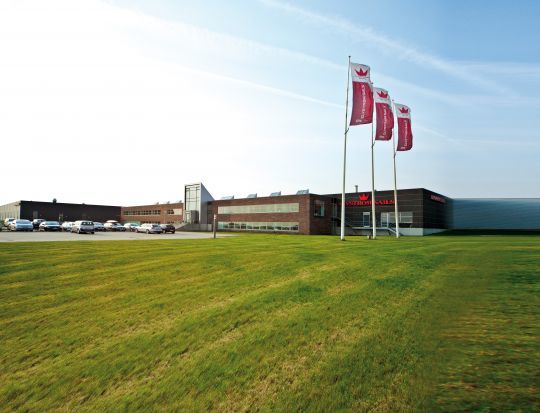
The sale of the majority shares also meant that Elvstrøm Dinghy Sails became Fogh-Sails Europe A/S in 1976 âeuros until, three years later, Hans Fogh retired and the company was renamed Elvstrøm Sails. The following year, in 1980, Henning Olsen, who had taken over the company, passed away, leaving his son Claus Olsen at the helm. Claus Olsen concentrated on product development and marketing during the following decade.
The foundation of the OEM market presence, it is also a springboard for the Elvstrøm brand, not only as a sailmaker but also in the fashion industry. Elvstrøm sailing equipment, and in particular the now legendary watches manufactured by Lemania, enjoyed great success in the 80s.
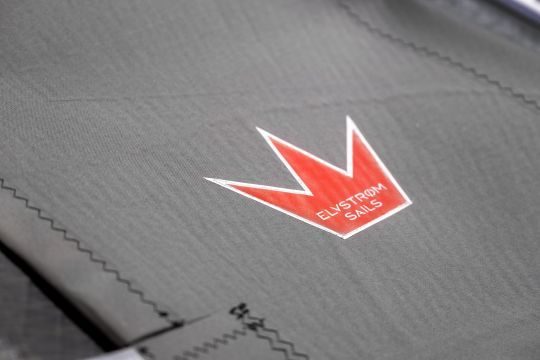
Conquering the cruise market
Fashion was not the only area in which Elvstrøm Sails developed strongly during the 80s and 90s. Product development and market demand led Elvstrøm Sails down a more cruising-oriented path, and to this day, the cruising segment remains as strong as ever.
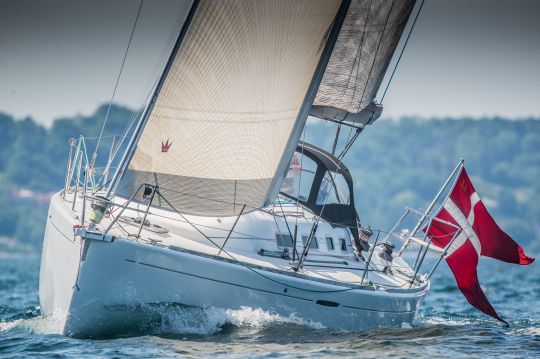
High-performance cruising and cruising sails also led to several product innovations and developments during this period. The introduction of furling systems was a game-changer for the company and the cruising market as the new millennium approached, and even today, furling sails of all shapes and sizes are an essential part of Elvstrøm Sailsâ?? product range and development programs.
EPEX Technologie
The new millennium saw the introduction of new ways of building sails. In 2002, Elvstrøm Sails acquired the American sailmaker Sobstad and subsequently changed the company name to Elvstrøm Sobstad. A key element of the deal was the new Genesis technology developed by Sobstad.
Genesis was originally the idea of Peter Conrad, who invested a great deal of time and effort in building a radical new design. A sail without any type of traditional cloth âeuros Peter Conradâ??s vision was to manufacture load-bearing wires and then laminate the sail. It had many advantages, including a significant reduction in the stretch that traditional designs acquire over time. It also eliminates the need for seams, and the sail has a weight advantage.
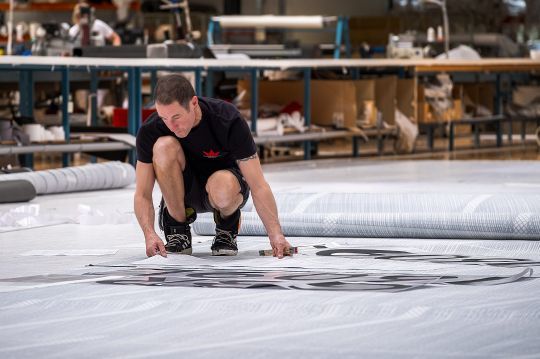
Conrad patented the idea with Sobstad, and by joining forces with Sobstad, Elvstrøm Sails joined in the development of Genesis.
This paved the way for the introduction of new materials, and it was in the mid-2000s that the sailmaker introduced membrane technology with materials such as Technora, Vectran and carbon in laminated configurations. The latest innovation was named in 2008 and introduced under the name EPEX.
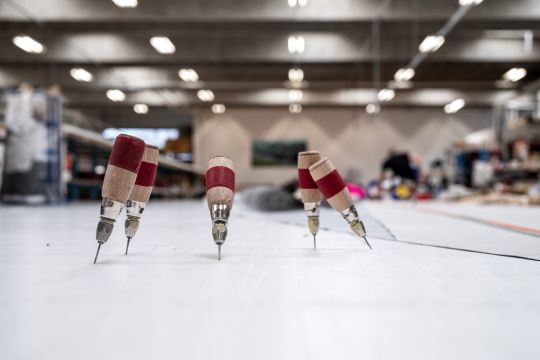
More OEM partners
While EPEX has been an essential part of the product range since 2008, Elvstrøm Sails has also developed a solid configuration for shipyards and has grown considerably in this area, an objective in its own right for Elvstrøm Sails in recent years. From 14 original equipment shipyards in 2014, Elvstrøm Sails currently supports 29 different European yacht brands and shipyards.
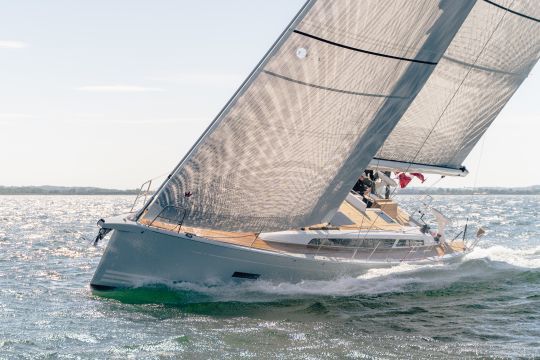
Comprising all Elvstrøm SailPoints, sales and service outlets, Elvstrøm Sails is represented in around 150 cities worldwide.
Looking to the future âeuros Sustainability and new productsÂ
EKKO is Elvstrøm Sails' commitment to listening to nature and responding with a sustainable approach to products, materials and processes. A process of which the sailmaker is just one part, and which depends on industry partners to pursue the same agenda.

Recycled materials since 2020
EKKO's approach is to seek out and use recycled materials - or to use materials that can easily be recycled. Elvstrøm Sails introduced the first recycled materials for sails in 2020, a world first. A taffeta for EPEX sails made from recycled materials.
Elvstrøm Sails then presented the eXRP Cruise. This is a high-end laminate whose main material components are made from recycled polyester, namely the film, taffeta and polyester fibers.
In 2022, Elvstrøm Sails was recognized by European Yacht of the Year for its sustainability efforts with eXRP cruising laminate, with a "Special Mention Award" for sustainability, and to date, eXRP has proven its worth worldwide.
Elvstrøm Sails is striving to find even more areas in which to add and implement even more recycling and energy optimization measures.

New products on the horizon: XYLO
Although EPEX remains strong, product development never stops. At Boot Düsseldorf 2024, Elvstrøm Sails presented the brand's latest sailing technology: XYLO.
XYLO combines the vast knowledge acquired over the last 20 years of production of EPEX and its predecessors, with the latest in materials technology. XYLO differs from EPEX in a number of ways, principally in the way materials are arranged and combined. XYLO uses spread-filament technology, which gives the material a flatter appearance. The filament strips are then applied to give optimum strength in all directions of the sail, while maintaining a flatter, more homogeneous surface.
XYLO was created in January 2024 as a new product in the ever-changing world of sailing!
